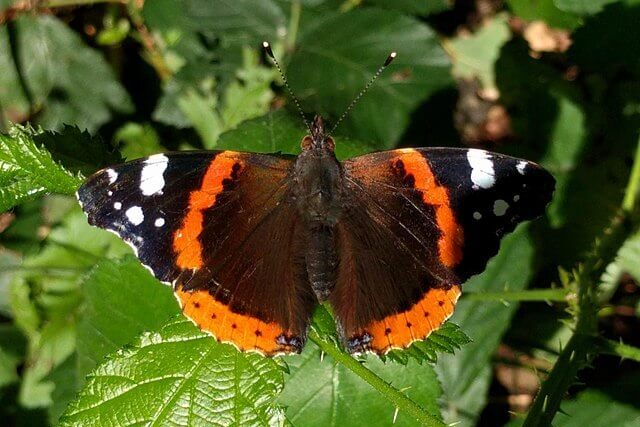
UK butterfly populations have rebounded to their highest levels since 2019, according to data collected by the Butterfly Conservation wildlife charity.
Over a span of less than a month, from July 14 to August 6, more than 1.5 million butterflies and day-flying moths were recorded. The red admiral species was the most frequently spotted across the UK, with 248,077 recorded sightings.
However, long-term trend figures reveal that several butterfly species have experienced significant declines since recording began 13 years ago. Dr. Zoe Randle, a conservationist, emphasised the importance of butterflies as indicators of a healthy environment and credited the mixed weather in 2023 for benefiting these insects.
“This summer has been a bit of a washout,” she told the BBC. “The rain combined with the hot days has kept vegetation growing, to be lush and green for caterpillars to feed on.
“The red admiral had a really good summer this year – an increase of 338% of last year’s count. That particular butterfly is doing well from climate change in the UK at least – it usually lives on the Mediterranean coast or north Africa.”
Scientists gathered data from volunteers across the country to assess butterfly abundance and the distribution of different species. Dr. Randle praised the public’s engagement and assistance in this year’s research.
“In all UK countries – Wales, Scotland, Northern Ireland and England – participation was up and also the number of counts was up which was fantastic,” she said.
“It is really refreshing to see people participate. It is fabulous.”
Conservationists attribute the increase in butterfly populations to the wetter weather in 2023, with an average of 12 butterflies counted per observation, compared to just nine in the long periods of drought and heat experienced in 2022.
The gatekeeper was the second most-seen species after the red admiral, with 222,896 sightings, marking a 12% increase from the previous year. However, data over the long term shows a 28% decline in this species since 2010.
White butterflies ranked third and fourth, with large whites observed 216,666 times and small whites 190,506 times. These figures represent an 11% and 15% increase from the previous year, respectively.
Despite the recent gains, the research also highlights the ongoing decline of certain species, such as the ringlet, common blue, and speckled wood. Dr. Richard Fox, the head of science at Butterfly Conservation, points to habitat loss as one of the most significant threats facing butterflies. Ensuring the conservation of these species is critical to maintaining biodiversity and ecosystem health in the UK.
“Butterflies need a place to live,” he said. “If they can feed, breed and shelter, they can thrive.”
——————————————————————————
At Natural World Fund, we are passionate about stopping the decline in our wildlife.
The decline in our wildlife is shocking and frightening. Without much more support, many of the animals we know and love will continue in their decline towards extinction.
When you help to restore a patch of degraded land through rewilding to forests, meadows, or wetlands, you have a massive impact on the biodiversity at a local level. You give animals a home and food that they otherwise would not have had, and it has a positive snowball effect on the food chain.
We are convinced that this is much better for the UK than growing lots of fast-growing coniferous trees, solely to remove carbon, that don’t actually help our animals to thrive.
This is why we stand for restoring nature in the UK through responsible rewilding. For us, it is the right thing to do. Let’s do what’s right for nature!
Donate today at https://naturalworldfund.com/ and join in the solution!

